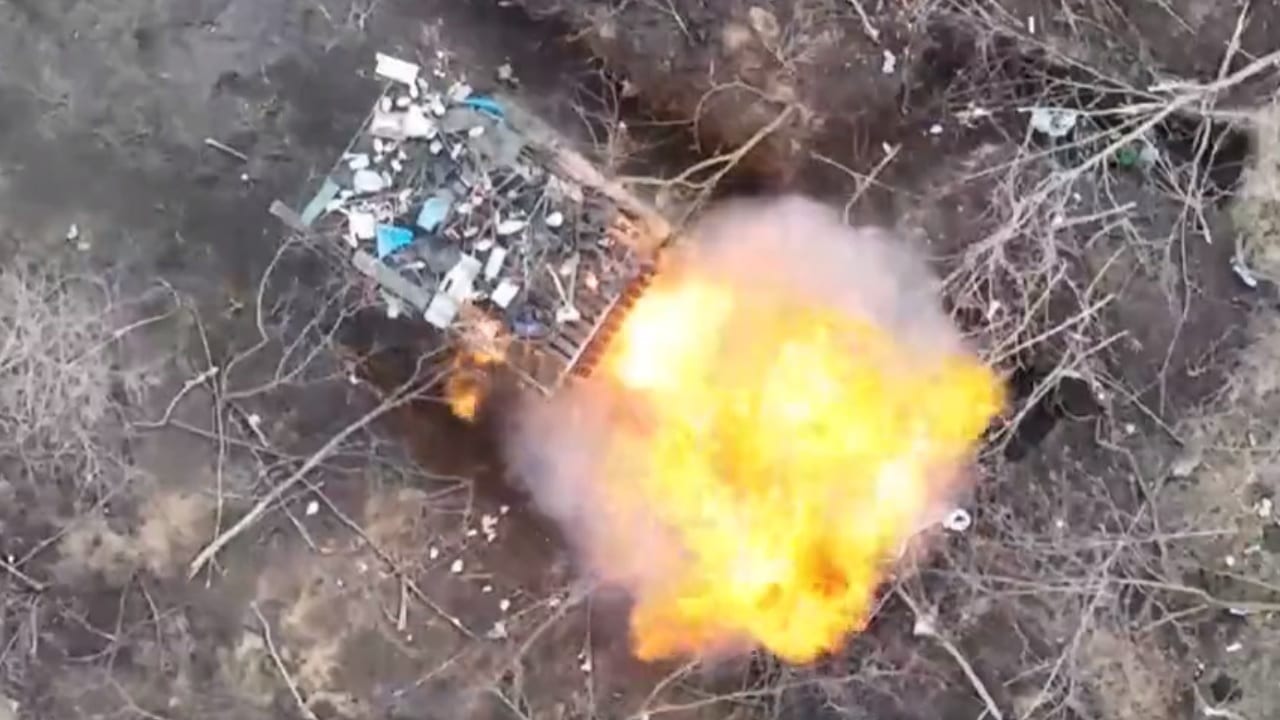The war is heating up in Ukraine.
An escalation in attacks along the front lines demonstrates Kyiv’s counter-offensive is in full swing.
This week, a Ukrainian BM-21 Grad 122mm multiple rocket launcher was destroyed by a Russian munition.
That Was Explosive: What We Saw in the Footage
In a video released by the open-source intelligence group @UAWeapons, a Lancet loitering munition appears to strike a rocket launcher in Donetsk Oblast.
Around twenty seconds into the video, the munition targets the launcher, culminating in an eruption of flames and billows of grey smoke above.
Several soldiers are seen fleeing the area before the strike, fortunately surviving the attack.
Kamikaze Weapons: What makes loitering munitions so dangerous?
Loitering munitions, often referred to as one-way attack unmanned aerial vehicles (UAVs), can orbit around an area until an exact target is located and taken out.
These suicide or kamikaze drones are very lethal and accurate, since they can remain airborne for some time and can change trajectory mid-flight.
Since the onset of Russia’s invasion, drones have played a major role in the conflict for both sides. Ukraine has relied heavily on foreign drones, including Turkey’s Bayraktar TB2 combat UAV.
Moscow has turned to its rogue ally Iran to supply its own drone arsenal.
These combat UAVs are inexpensive, relatively easy to operate and can cause a lot of damage, making them the preferred tools for both Russian and Ukrainian soldiers.
The ZALA Lancet- Specs & capabilities
While Moscow largely uses Iranian-designed UAVs in its attacks, the loitering munition depicted in the video is actually indigenous to Russia. The ZALA Lancet UAV is developed by the Russian-based company ZALA Aero Group for the Russian military.
Initially debuted in 2019, the UAV the ZALA can be used for both strike and reconnaissance operations. Before the drone is launched, operators can control its flight trajectory using GPS. Once the UAV loiters close to the target, it is controlled manually via electro-optical guidance and a TV guidance unit. Operators can then alter the drone’s flight path if the target is on the move, making the Lancet drone very handy for Russian forces.
Design-wise, the Russian loitering UAV has a unique shape. As detailed by Military Today, “Two pairs of X-shaped wings are installed at the front and rear of the fuselage. It’s powered by an electric motor that drives a two-bladed propeller located at the rear.
The standard version has a maximum range of 40 km and an endurance of around 40 minutes. The weight is only 12 kg thanks to the use of plastic and composite materials in its structure. Such suicide drones are capable of hovering in the air and swooping down on the target at a speed of up to 300 km/h to hit it on its most vulnerable part.”
The Lancet in Ukraine
Prior to the Ukraine invasion, Russian troops used the Lancet in its military intervention in the Syrian civil war. The Russian drone appeared to be deployed in Kyiv pretty early on in the invasion.
By late 2022, multiple videos depicting the Lancet striking Ukrainian heavy weaponry, air-defense systems and howitzers began to circulate widely. As Kyiv’s counter-offensive continues, the Lancet loitering munition will certainly remain a frequently used weapon by Russian troops.
#Ukraine: A Ukrainian BM-21 Grad 122mm multiple rocket launcher was destroyed by a Russian Lancet loitering munition in #Donetsk Oblast. pic.twitter.com/ugtIPPg8eB
— ???????? Ukraine Weapons Tracker (@UAWeapons) June 22, 2023
Maya Carlin, a Senior Editor for 19FortyFive, is an analyst with the Center for Security Policy and a former Anna Sobol Levy Fellow at IDC Herzliya in Israel. She has by-lines in many publications, including The National Interest, Jerusalem Post, and Times of Israel. You can follow her on Twitter: @MayaCarlin.

